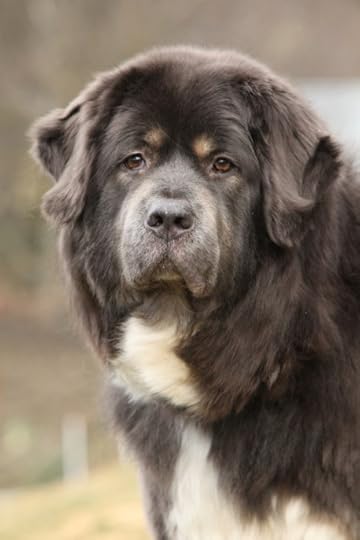Dogs Have Evolved to Be With Us Even In Thin Air
 Last month I posted a story about studies demonstrating that both Tibetans and Sherpas, the celebrated Himalayan climbers, have evolved a special set of adaptations to their high-altitude way of life.
Last month I posted a story about studies demonstrating that both Tibetans and Sherpas, the celebrated Himalayan climbers, have evolved a special set of adaptations to their high-altitude way of life.
From my point of view, that explained why I am such a high country wuss. Damn you, EPAS1!
Now it turns out their dogs have me beat, too.
Here’s the press release:
As humans have expanded into new environments and civilizations, man’s best friend, dogs, have been faithful companions at their sides. Now, with DNA sequencing technology readily available to examine the dog genome, scientists are gaining new insights into canine evolution.
In a new study published in the journal Molecular Biology and Evolution, author Dong-Dong Wu, et. al., explored the genetic basis of high-altitude adaptation of Tibetan Mastiffs, which were originally domesticated from the Chinese native dogs of the plains.
The authors examined genome-wide mutations (called single nucleotide polymorphisms, or SNPs) of 32 Tibetan Mastiffs, and compared them to 20 Chinese native dogs and 14 grey wolves. Overall, they identified more than 120,000 SNPs, and in their analysis, narrowed these down to 16 genes that have undergone positive selection in mastiffs, with 12 of these relevant to high altitude adaption.
These candidate genes have been shown to be involved in energy production critical to high-altitude survival under low oxygen conditions. Similar categories showing selective signatures have been observed in other high-altitude animals, suggesting that “independently, genes can be adaptively evolved to yield similar phenotypic adaptive responses,” said Wu
One hypoxia-inducible factor (HIFs), called EPAS1, has also been found in hypoxia adaptation in Tibetans, supporting the possibility of convergent evolution occurring between dogs and humans, though the authors caution that much more work needs to be done for a full comparison of high altitude adaptation. For future studies, the authors will explore using whole genome sequences from individual Tibetan Mastiffs to gain better insights into high-altitude adaptations and canine evolution.
Journal Reference: Yan Li, Dong-Dong Wu, Adam R. Boyko, Guo-Dong Wang, Shi-Fang Wu, David M Irwin, and Ya-Ping Zhang. Population variation revealed high altitude adaptation of Tibetan Mastiffs. Mol Biol Evol, February 11, 2014 DOI: 10.1093/molbev/msu070





